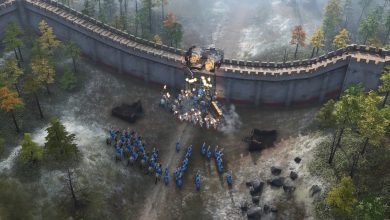The Art of War: Mastering Tactics in Strategy Games

Strategy games have been a popular form of entertainment for centuries, dating back to the ancient civilizations of China and Greece. These games challenge players to think critically, plan ahead, and make informed decisions, all while testing their ability to execute those decisions in real-time. In many ways, playing strategy games can be seen as an exercise in the art of war, teaching valuable lessons about tactics and strategy that can be applied to life beyond the screen.
One of the key elements of the art of war is understanding the importance of preparation. Before entering into any conflict, it is essential to understand the terrain, the resources available, and the strengths and weaknesses of one’s own and the enemy’s forces. In strategy games, this preparation often involves gathering information about the map, researching technology and units, and planning out one’s starting moves.
Another important aspect of the art of war is the concept of flexible planning. No battle plan survives contact with the enemy, and it is crucial to be able to adapt to changing circumstances on the fly. In strategy games, this means constantly reassessing the situation and adjusting one’s tactics as necessary. It is often helpful to have multiple backup plans in case the original strategy fails, allowing for a quick and effective response to any new developments.
The art of war also stresses the importance of exploiting the enemy’s weaknesses. By understanding the enemy’s strengths and weaknesses, players can develop tactics to target their vulnerabilities and gain the upper hand. In strategy games, this often involves identifying the enemy’s key production facilities, resource-gathering units, and critical structures, and then launching targeted attacks to take them out.
Another important lesson of the art of war is the concept of concentration of force. This involves focusing all of one’s resources and forces on a single, decisive point in order to achieve a decisive victory. In strategy games, this can mean amassing a large army at a specific location and launching a massive assault, or it can involve focusing all of one’s efforts on a key objective, such as capturing an enemy stronghold or destroying an enemy army.
Finally, the art of war teaches the importance of patience and perseverance. Success in war is often a long and arduous process, requiring persistence and determination in the face of adversity. In strategy games, this means continuing to play even after setbacks and continuing to refine one’s tactics and strategies over time.
In conclusion, playing strategy games is a great way to practice the art of war. By preparing for battle, being flexible, exploiting the enemy’s weaknesses, concentrating one’s forces, and persevering through setbacks, players can master the tactics and strategies needed to succeed in these games, and in life beyond the screen. Whether you’re a seasoned veteran or a newcomer to the world of strategy games, there is always something to be learned from the art of war.




